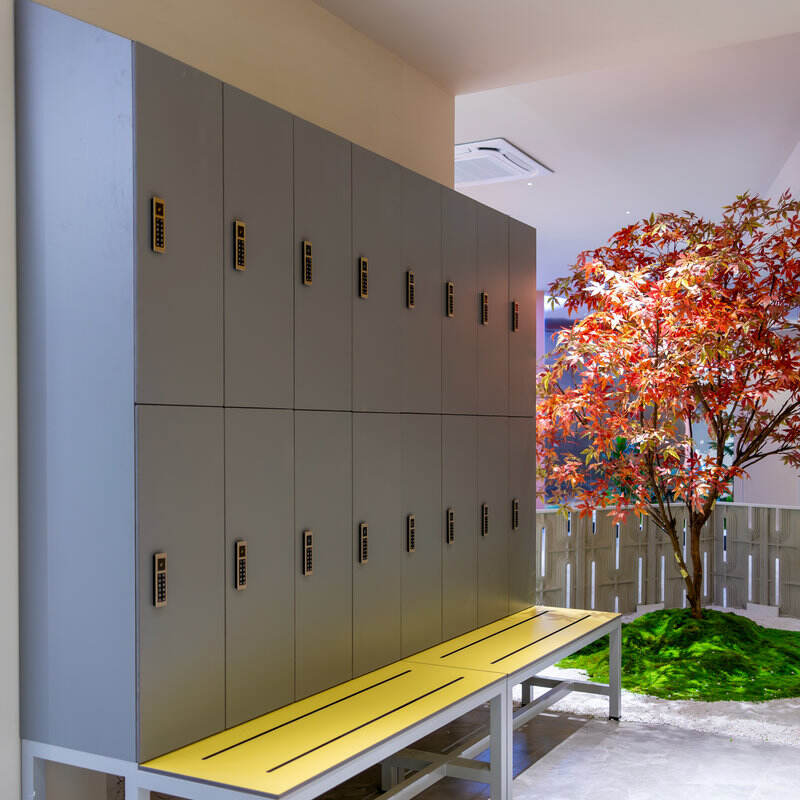
Common Wear Patterns in Gyms and Stadiums
Athletic lockers take a beating every day they're used. Bent hinges happen when people rush in and out, surfaces get scuffed up by sports gear bumping around, and locks tend to jam after being opened and closed so many times. Look at football locker rooms specifically - those doors start getting out of alignment pretty fast. Studies show about one in five lockers will have alignment issues within just two years because of all the constant slamming and weight shifting. Then there's the moisture problem too. Locker rooms next to pools are especially bad for this. Water gets everywhere, and it doesn't take long before metal parts start rusting through. This rust weakens everything over time, making repairs necessary much sooner than anyone would like.
Growing Demand for Heavy-Duty Athletic Lockers
Recent surveys show 68% of facility managers now prioritize industrial-grade locker systems. This shift is driven by a 29% increase in high school sports participation since 2015, shorter replacement cycles (down 42% in pro stadiums), and rising insurance premiums linked to theft and vandalism incidents, which have increased by 17% since 2020.
Selecting the Most Durable Materials for Athletic Lockers
Steel vs. Aluminum vs. Phenolic: Comparing Strength and Longevity
16-gauge steel remains the industry standard for high-traffic settings, offering 25% greater impact resistance than aluminum. While aluminum provides inherent corrosion resistance ideal for aquatic environments, phenolic resin composites outperform both in humidity, demonstrating 98% moisture resistance in controlled testing.
Corrosion Resistance and Impact Performance in Metal Lockers
Powder-coated steel slows rust progression by 40% compared to untreated surfaces under salt-spray conditions. For coastal sports complexes, aluminum lockers exhibit 87% lower oxidation rates over five years but require reinforced frames to resist denting from equipment impacts.
Material Selection Guidelines for High-Use Venues
For optimal performance, select steel (12–16 gauge) in weight rooms with heavy equipment, aluminum in aquatic centers, and phenolic resins in steam-prone shower zones. Industry leaders recommend pairing zinc-coated hardware with marine-grade seals to address failure points responsible for 82% of replacements, according to the 2023 Athletic Storage Materials Report.
Essential Security Features for Secure Athletic Locker Solutions
Critical Security Needs in High-Traffic Sports Facilities
Security in busy athletic facilities actually starts at the building stage. Doors made from 16 gauge steel cut down on break-in attempts by about 41 percent when compared to lighter door options. The little things matter too hidden hinges and those handles that sit flush with the door surface stop people from messing around, particularly where valuable gear is kept safe. Most pro sports complexes have these integrated audit systems now, tracking nearly all access points (around 98%) which makes it easier to hold people accountable and respond faster when something goes wrong.
Digital vs. Mechanical Locks: Reliability in Stadium Settings
When power goes out, hybrid locking systems combining RFID tech with old school mechanical overrides keep things running smoothly. Studies indicate digital locks can slash key management expenses around half in places with lots of users, though many still opt for traditional mechanical locks in damp locations where they just plain work better over time. The best security setups incorporate anti-pry hardware and those heavy duty Grade 1 commercial cylinders whether dealing with RFID or mechanical locks. Facilities managers know these components make all the difference when it comes to keeping unauthorized folks from getting through, especially after hours when nobody's watching.
Best Practices for Minimizing Theft and Vandalism
Positioning lockers under video surveillance reduces theft by 34% in municipal sports facilities. Antimicrobial powder-coated finishes help prevent germ spread and discourage vandalism. Facilities also report a 29% drop in security incidents when combining clear usage policies with tamper-evident locker tags, fostering user accountability without sacrificing convenience.
Ventilation, Hygiene, and Moisture Control in Locker Design
Benefits of Perforated and Ventilated Athletic Lockers
Perforated designs reduce internal humidity by 37% compared to solid units in high-moisture environments. Units with 20–30% surface perforation maintain structural integrity while enabling continuous airflow, preventing bacterial growth from damp gear. A 2023 airflow study found ventilated lockers reduced musty odors by 52% during six-month trials in collegiate gyms.


